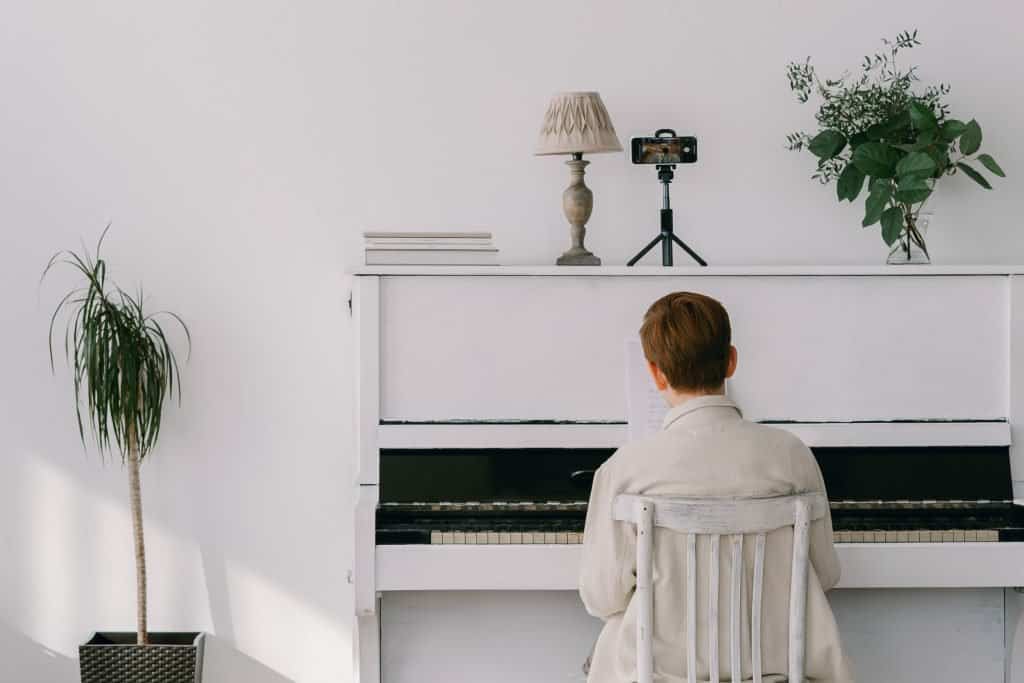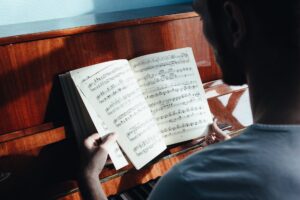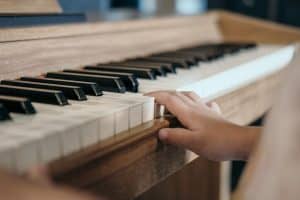Sheet music is a language, and sometimes learning to read a new language can be challenging. This is a very special type of language called music notation, and we use lots of different types of images and pictures to help musicians tell the difference between different notes. Some of these musical symbols we use are called accidentals. When looking for what is an accidental in music definition, you will commonly see only three signs. Music accidentals like a flat or sharp sign you will see a lot, but we’ll cover some less common ones here too. The accidentals in music definition is: Signs that change note names. They are as important to musicians and music theory as punctuation is to writing words.
Key takeaways
- They can be white or black keys
- Accidentals can alter a note by a half step
- They can be removed by using a natural sign
- Sometimes accidentals are written into key signatures
- When reading music, they don’t show on the same note in a single measure

What are accidentals in music?
When composers write sheet music, they need to be able to play lots of different types of notes. However, since we know there are only 7 piano note names, A B C D E F G, that is only the white keys. How is it that we can play the black keys on the piano? We use accidentals!
The sharp symbol

This symbol looks like a number sign, but it actually is not. It is called a Sharp accidental, or a Sharp sign. It raises any note by a half step. It can be applied to any key on your piano keyboard. Most often it will change a white keys into black keys, but if the sharp symbol is applied to the note B or E it will move them up a half step, but not to a white key.
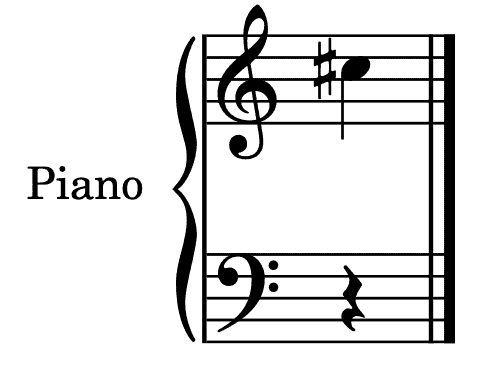
If you were playing the note C on your keyboard, and you saw this, you would play the black key one step higher than C. We call that note C sharp, or C#. What can be very tricky is when you have the same pitch being written after it. Which note do we play?
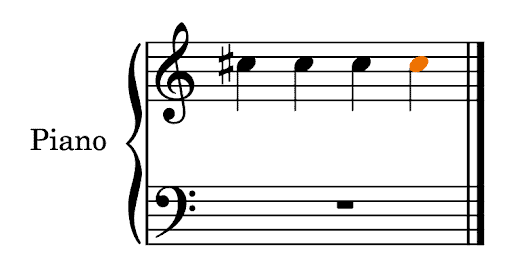
This can look tricky but in fact it is not. The notes written afterward are still C#, but because composers used to have to write all of this music out by hand, they made a rule. If the note following is still played with a sharp, it doesn’t need to be written on that note. When a note is affected by an accidental in a measure, the following note is affected as well, but not written. So once you are told to play a note that a sharp raises, the following C notes are the same key.
Many beginning piano students need to look accidentals definition music theory, so let’s look at another example:

What about the notes written in the second bar? The previous accidental does not apply to subsequent notes in the new bar. One of the most common places we see sharp signs is when we start to look at harmony in music. Many chords use accidentals!
The flat symbol
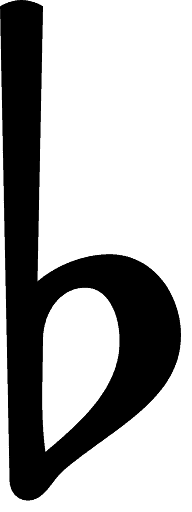
The flat symbol looks like a lowercase b. It is another important part of music theory. It also changes a note by a half step, except this time the flat symbols lowers the note by a half step. It can be placed in key signatures, or on the same rules that apply to the sharp accidental apply to the flat accidental.
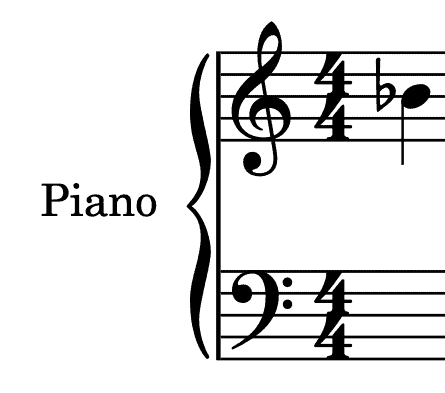
Instead of the sharp symbol that raises the note, this symbol takes our original pitch and lowers it by one semitone. This flat symbol falls on the note B but the correct pitch to play on your piano keyboard is one half step below. We call it B flat, or Bb.
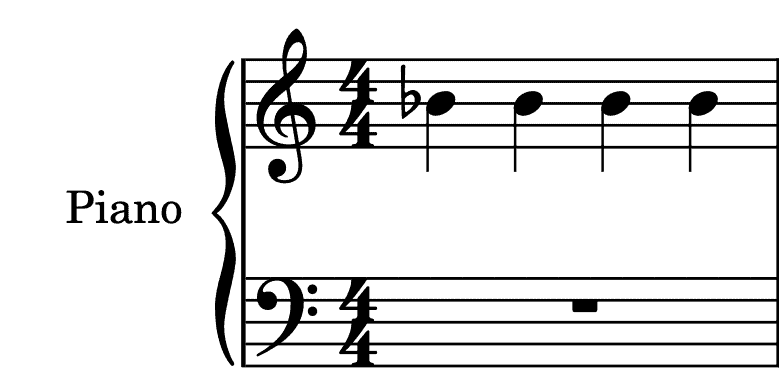
When a note occurs after the flat symbol, those are still flat notes. Just like the same with our sharp symbol. There are many piano scales that use flats instead of sharps!
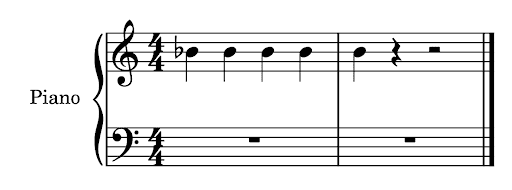
Be careful of the second bar. It may look like the same note, but since that note is in a brand new bar, it does not contain any of the accidentals that were written in the previous measure. The previous accidentals only apply to the same measure.
The flat symbol lowers notes by a half step, and it can be applied to either white or black keys on your piano keyboard. How do we get rid of sharps and flats piano keys?
The natural sign
![]()
The natural accidentals are like a music theory and music notation eraser. It removes any previously written accidentals on the same line, making the note change back to its natural state. Natural signs remove any accidental. Here is how we can remove flat and sharp signs.
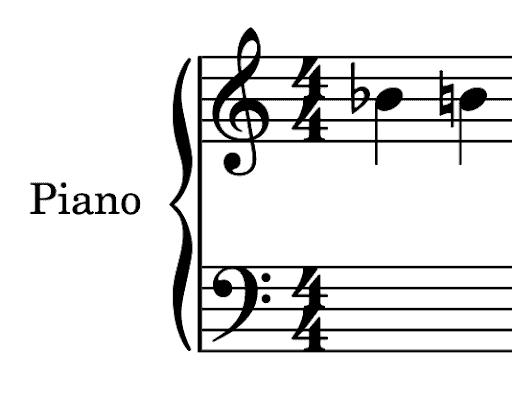
The first note of the measure is Bb. The second note is B natural. In this case the natural sign raises the note by a half step, but you really want to understand that it is removing the previous piano notes. It could just as easily lower a sharped note.
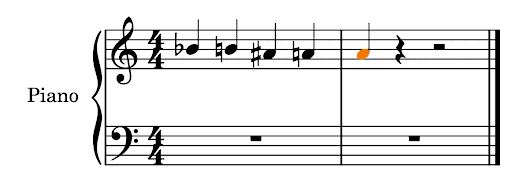
Here you can see that the sharps and flats are being removed just like the previous examples. All natural notes are white keys.
Some of the most beautiful examples of melody in music include a combination of sharps, flats, and natural signs. When you see them don’t think of them as confusing, try to see how they will make the music much more interesting.
A popular song that uses lots of accidentals and naturals is The Entertainer by Scott Joplin. A great place to learn how to play this song is the Skoove Piano App. As you play the song, the app waits for to hear your note input, and then moves forward. This is a great way to practice playing accidentals, and to learn if you’re playing them correctly.
Other types of accidentals
The term accidental refers to any time a note in the music needs to change from what is written in the clef, and we can do this many different ways. Most common are single accidentals, but there are also double accidentals.
Double sharp

The double accidental does exactly what you would think, instead of moving a note one half step, a double sharp raises our original note up two half steps. We call this a double sharp.
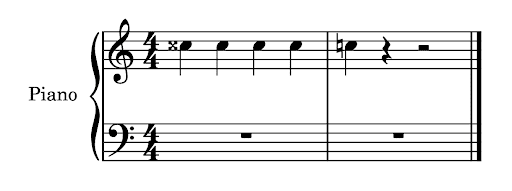
Double sharps also become ignored when you move onto the second bar in this example. Double accidentals are very rare. Not all double accidentals raise the notes.
Double flat

Unlike the Double Sharp, the double flat symbol is just two normal flat symbols right next to each other. You will never see a double flat in a key signature. The exact opposite of a double sharp, double flats take the note down two half steps, or put it down just a whole step. Flat notes are not treated differently than a double sharp.
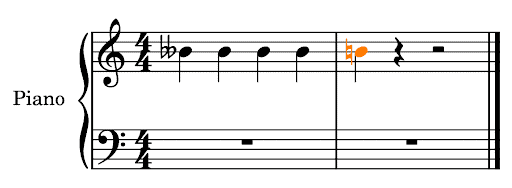
The note written here is a B double flat, but the note is actually two half steps below B. The notes that come after are the same key, but they’re not a B, they’re actually playing an A Natural Note. Two half steps below B, is A. Important to remember that the double flat is also removed by the natural symbol.
Accidentals inside key signatures
Accidentals are not only found in the measure. They can also be written on the clef itself. Sometimes a composer needs to write sharps in on the clef because of the key signature they are writing in.
D major
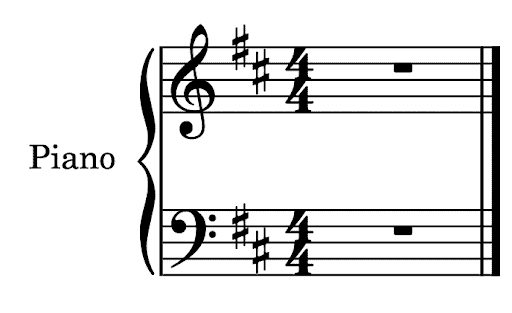
Eb major
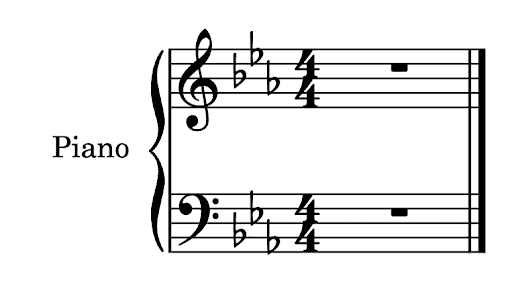
This is the key of Eb Major. Same as the other keys, this one is written so that the pianist and composer will not have to write flat symbols or sharp symbols every measure. It is much easier to just write the notes once on the clef, and then use natural symbols.
You can learn how to play Frederick Chopin’s Nocturne, using the key Eb in the app Skoove.
What is a courtesy accidental?
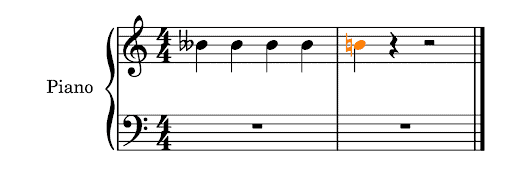
The note highlighted is a Courtesy accidental. Courtesy Accidentals are notes that are written after a bar line by the composer or publisher in order to remind the player that the music is changing, or remaining the same. Even though we know that the note changes back to the natural note of the key signature at the beginning of each bar, the courtesy accidental reminds the player. Courtesy accidentals help us understand what are accidentals in music.
Sometimes you will courtesy accidentals written with a parenthesis. It is also important to remember that courtesy accidentals are not always natural symbols. What if we were playing in a key signature other than C major, with no sharps or flats? Would we play the same key? Does the bar line work the same? Should we play a black key or white notes?
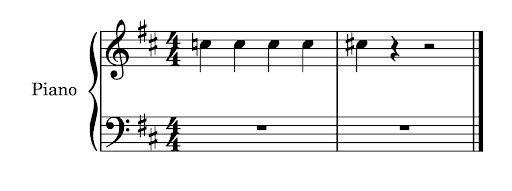
Here is another example from the key signature D Major. Since the C in the Key of D is actually C#, when it is lowered in the first bar, we need a natural symbol. The courtesy accidental reminds the performer to raise back to C#, instead of playing the same key you were before.
How to use accidentals in music
Writing down a great idea when you’re composing is not as easy as it sounds. Sometimes your music will need to be written using accidentals, and it can be tricky to make sure your music is always very clear to read and perform.
When to use sharps or flats
When composers write music they go through a stage of the writing called “Music Preparation”. This is a stage of writing that includes all of the things a person would do to make the music readable, and understandable for a new person seeing their music for the first time. Think of it like spell-checking, or proof reading, but for composing music.
Rising
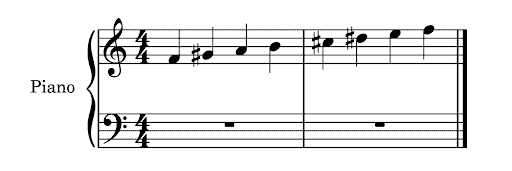
Falling
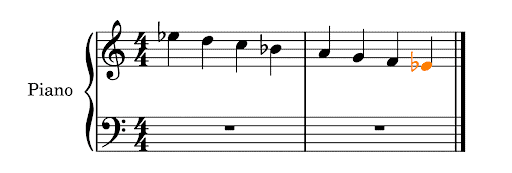
During the stage of music preparation a composer will add things like courtesy accidentals, adjust the key, add other notes, other keys, adjust a notes pitch. The most important thing for music to be easy to read, is when all of the symbols are logical to the eye. When we see a group of note’s pitch going up, our brain understands this information easier if we are using sharp symbols. Sharp symbols are associated with rising.
When you’re trying to figure out sharps or flats, consider these:
- Is my key signature using Sharps or Flats?
- Is my music already using Sharps or Flats?
- Is my musical idea rising or falling?
- What would be easiest for someone to read for the first time.
Using accidentals in your future
Now that you know everything there is to know about accidentals and how to use accidentals in music, reading should be no problem at all. Try to remember that accidentals are not accidents, and that they’re as important to musicians as the notes themselves. Accidentals allow us as musicians to express the complex and interesting thoughts in our music, and how to understand the beautiful things people have written before.
The best way to learn about how to write and read piano music is by taking lessons using the Best Piano Learning App Skoove!
Try out your free trial of Skoove today!
Author of this blog post:








